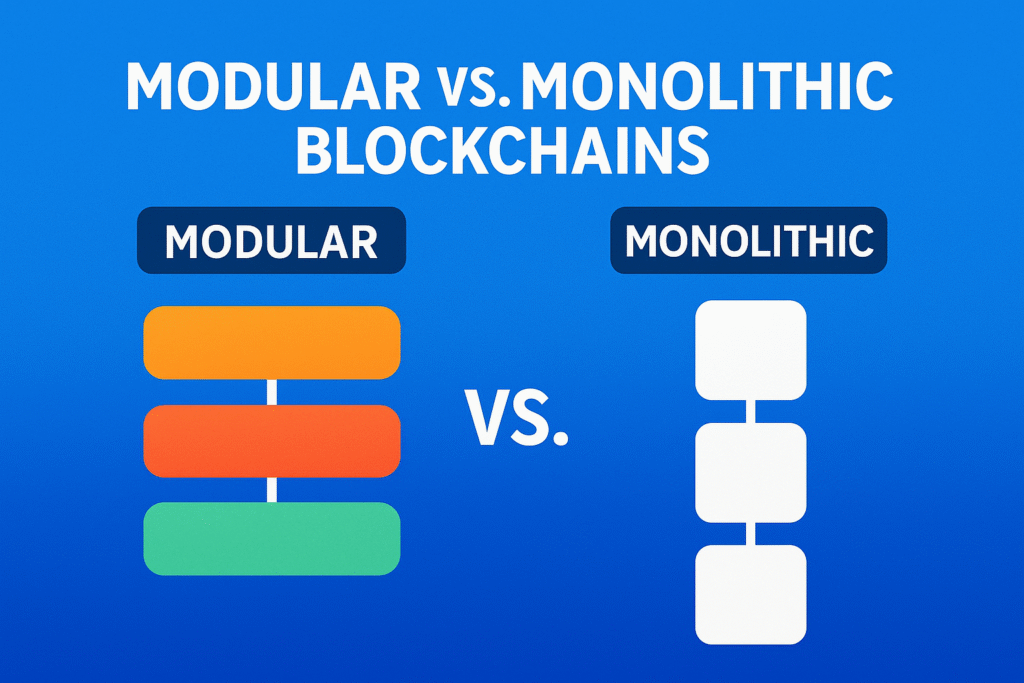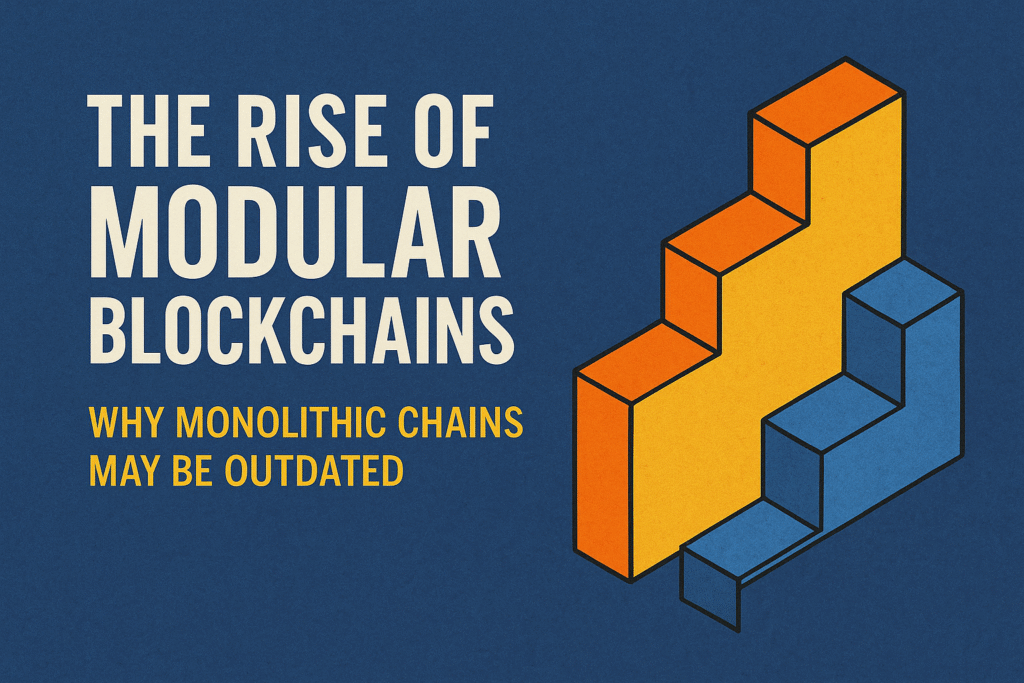Modular Blockchains: Why They’re Replacing Monolithic Chains
The crypto space is evolving fast—and so are its foundations. One of the most transformative developments in blockchain architecture is the rise of modular blockchains, a paradigm shift that could render traditional monolithic blockchains obsolete.
If you’ve been watching the crypto market closely, you’ve probably heard names like Celestia, EigenLayer, or Rollkit. These aren’t just buzzwords—they’re part of a broader modular movement that’s reshaping how we think about scalability, decentralization, and innovation in Web3.
Let’s explore what modular blockchains are, how they differ from monolithic ones, and why they matter.

Monolithic Blockchains: The Old Way of Doing Things
In a monolithic blockchain, everything happens on one layer:
- Execution (running smart contracts and apps)
- Consensus (agreement between nodes)
- Data availability (storing and distributing blockchain data)
- Settlement (finalizing and validating transactions)
Examples include Bitcoin, Ethereum (pre-rollups), and Solana. While effective in their early days, monolithic designs struggle with scalability and flexibility as demand grows.
Limitations:
- Bottlenecks in performance
- High gas fees
- Difficult to upgrade or customize
- Poor user experience for large-scale dApps
What Are Modular Blockchains?
Modular blockchains separate core responsibilities—delegating tasks like execution, consensus, and data availability to different specialized layers.
Instead of trying to do everything on one chain, modular designs break down the system into focused, interoperable components.
Example Breakdown:
- Execution Layer: Handles smart contract computation (e.g., Rollups like Arbitrum)
- Data Availability Layer: Stores and distributes data (e.g., Celestia)
- Consensus Layer: Ensures agreement (e.g., Ethereum’s Beacon Chain)
- Settlement Layer: Finalizes transactions securely
This decoupling makes it easier to scale individual components without affecting the rest of the system.
Why Modular Is the Future
1. Scalability Without Compromise
Modular chains can offload execution or data storage to dedicated layers, reducing congestion. This allows Rollups to thrive, leading to faster and cheaper transactions.
2. Security via Shared Consensus
Many modular architectures inherit security from trusted chains like Ethereum, combining scalability with robust decentralization.
3. Innovation and Flexibility
Builders can mix and match layers like Lego blocks—using Celestia for data, Ethereum for security, and a custom execution engine. This modularity opens doors for faster experimentation.
4. Optimized for Specialization
Each component can focus on what it does best: no more trade-offs between performance and decentralization.
Real-World Projects Embracing Modularity
- Celestia: The first modular data availability layer, aiming to decouple execution from consensus.
- Polygon CDK + Avail: Supporting modular L2s and data layers.
- EigenDA by EigenLayer: Enables restaking for data availability.
- Rollkit: A modular execution layer that uses Celestia for data.
These projects are setting the stage for a more scalable and efficient Web3 infrastructure.
Challenges to Consider
While modular blockchains offer significant advantages, they’re not without risks:
- More complex architecture: Developers must understand how layers interact
- Latency and interoperability: Layer coordination isn’t trivial
- Still evolving standards: Not all layers are production-ready
Still, the benefits far outweigh the drawbacks—especially for long-term builders.
Modularity Is a Movement, Not a Trend
As we move into a multi-chain future, modular blockchains offer a framework built for longevity. They unlock scalability, flexibility, and decentralization in a way that monolithic chains simply cannot.
Whether you’re an investor, developer, or just crypto-curious, understanding this shift could be key to identifying the next wave of foundational infrastructure in Web3.
The future isn’t one giant chain—it’s a network of modular, interoperable layers working in harmony.



